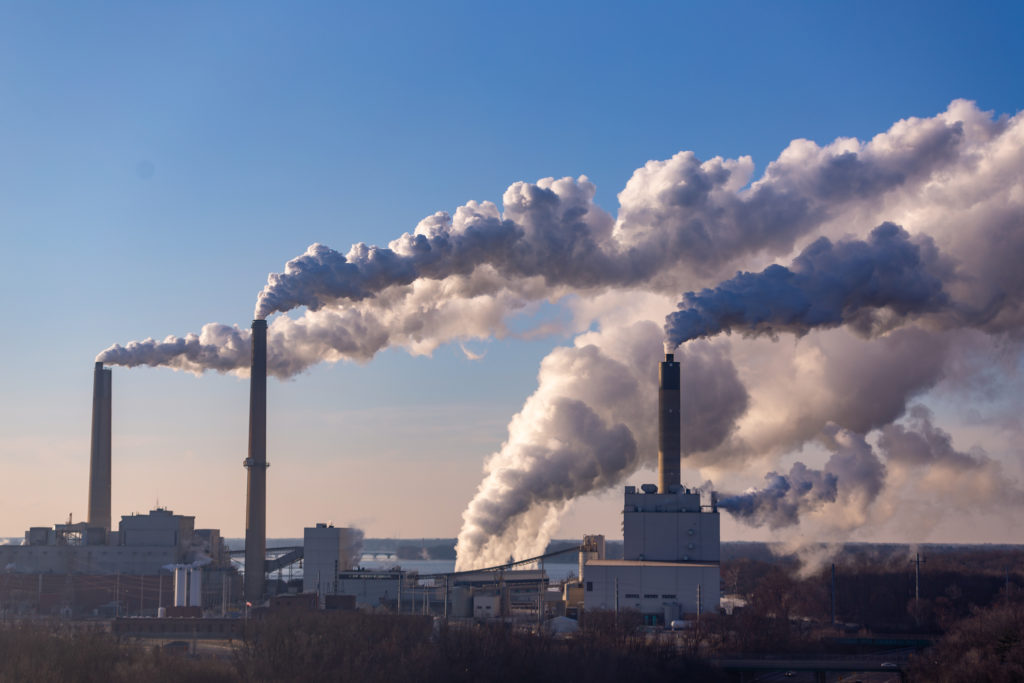UMass Researchers Name Top Air And Water Polluters, Climate Gas Emitters In The U.S.

Wind blowing pollution from a coal burning power plant. Photo: umass.edu
New Report From Umass Amherst’s Political Economy Research Institute Also Includes Environmental Justice Indicators, Tracking Unequal Impacts On Minorities And The Poor
Source: UMass News and Media
Researchers at the University of Massachusetts Amherst Political Economy Research Institute (PERI) today published the newest editions of its lists of the top corporate air and water polluters and top greenhouse gas emitters in the United States, based on the most recent data available from the Environmental Protection Agency.
The Toxic 100 Air and Toxic 100 Water Indexes rank U.S. industrial polluters using the EPA Toxics Release Inventory, and the Greenhouse 100 Index ranks U.S. companies by their emissions responsible for global climate change according to the EPA Greenhouse Gas Reporting Program. The PERI Indexes also include environmental justice indicators to assess impacts on low-income people and minorities.
“The Toxic 100 and Greenhouse 100 inform consumers, shareholders, regulators, lawmakers and communities which large corporations release toxic and climate-altering pollutants into our environment,” said Michael Ash, co-director of PERI’s Corporate Toxics Information Project and professor of economics at UMass Amherst. “We assess not just how many pounds of pollutants are released, but which are the most toxic and who is exposed. People have a right to know about toxic hazards to which they are exposed. Legislators need to understand the effects of pollution on their constituents.”
The Greenhouse 100 Index ranks companies by 2019 direct emissions from large sources. Vistra Energy, Duke Energy, and Southern Company are the top three companies on the list for the third year in a row, having each released more than 85 million metric tons of CO2-equivalent emissions. Together these three companies released 4% of all U.S. greenhouse gas emissions from all sources including non-energy sources.
Rounding out the top 10 in the Greenhouse 100 are Berkshire Hathaway, American Electric Power, Xcel Energy, Energy Capital Partners, NextEra Energy and Exxon Mobil, with the U.S. government ranking sixth. The top company whose direct emissions are not dominated by electric power plants is Exxon Mobil at No. 10. Among the top 10, Energy Capital Partners has the highest weighted share of minorities living within 10 miles of its facilities with likely disproportionate exposure to co-pollutants of combustion.
The Toxic 100 Air Polluters Index reports that the top 10 companies in terms of total potential chronic human health risk are Boeing, LyondellBasell, Huntsman, Linde, BASF, Dow Inc., Celanese, Assa Abloy, Baker Hughes and Eastman Chemical. Boeing and Assa Abloy make the list almost entirely because of chromium from their facilities in Portland, Oregon, and Berlin, Connecticut, respectively, while Celanese charted due to ethylene oxide from one facility in Pasadena, Texas.
The Toxic 100 Air Index covers publicly-traded as well as privately-held companies that appear on Forbes, Fortune or S&P lists, such as Koch Industries at No. 37. The index includes environmental justice indicators that denote, for example, that while minorities make up just under 40% of the U.S. population they bear 68% of the air-toxics risk from facilities owned by LyondellBasell.
Northrop Grumman, Dow Inc., LyondellBasell, Celanese and Canopus International top the Toxic 100 Water Index, which ranks the pounds of toxics released into surface water or sent to water-treatment systems for 2019, adjusted for chemical toxicity. For the first time, the Toxic 100 Water list also now includes Environmental Justice indicators, among which show that minorities bear 48% of the toxic hazard from water releases and transfers to water treatment facilities by Dow Inc.
In addition to the top 100 lists, search functions for toxic air, toxic water and greenhouse gas polluters provides information on all companies reporting releases to the Toxics Release Inventory or the Greenhouse Gas Reporting Program.
“In making this information available, we are building on the achievements of the right-to-know movement,” Ash notes. “Our goal is to engender public participation in environmental decision-making, and to help residents translate the right to know into the right to clean air, clean water, and a livable planet.”
The complete Toxic 100 and Greenhouse 100 lists – and their accompanying report – can be found online at http://toxic100.org/.

1 thought on “UMass Researchers Name Top Air And Water Polluters, Climate Gas Emitters In The U.S.”